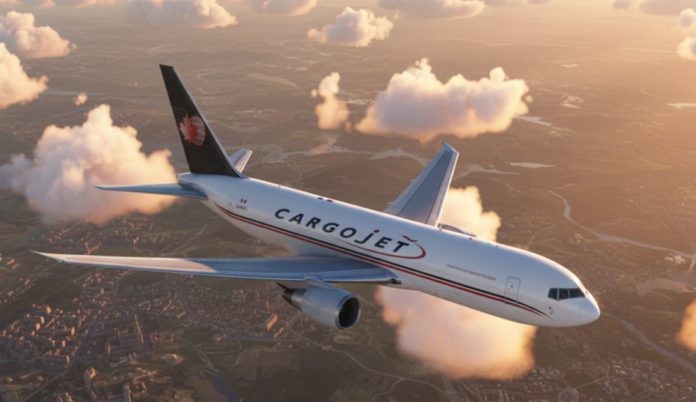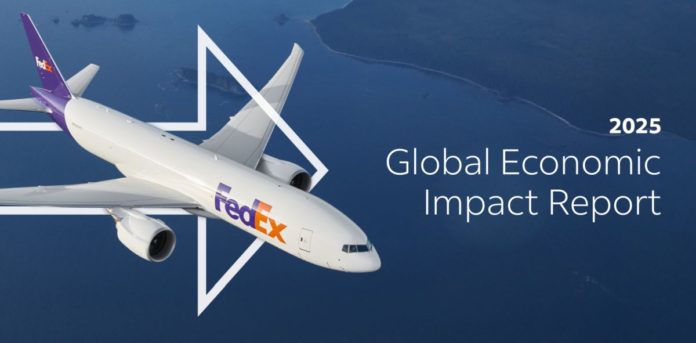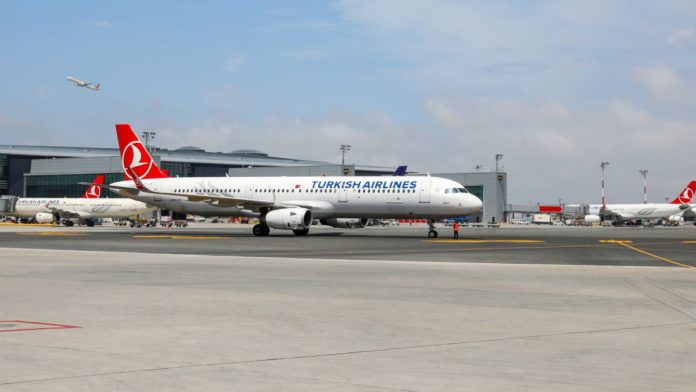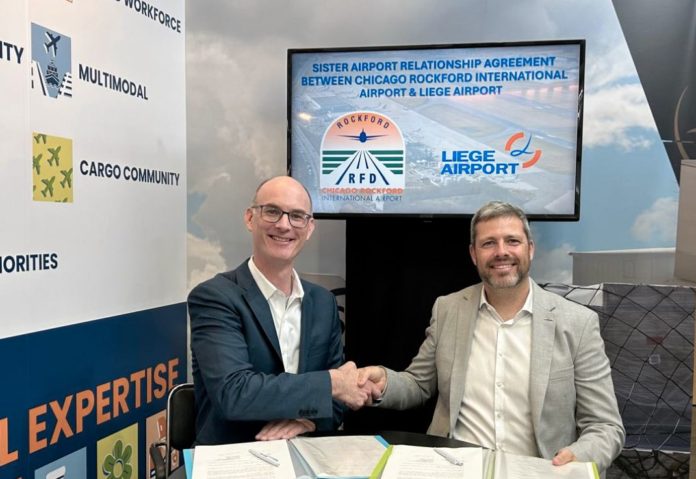IAG Cargo carrier Iberia has transported a collection of artefacts from Mexico City to Madrid for the Half the World: Women in Indigenous Mexico exhibition. They moved on IAG Cargo’s Secure cargo solution and arrived in Madrid aboard four the carrier’s A350s. The collection will be shown at three of Madrid’s leading art museums until the first quarter of 2026.
Forwarders alarmed by Trump’s Mexico air routes cull
The Airforwarders Association (AfA) says it is concerned by the US government’s withdrawal of 13 routes operated by Mexican airlines, warning that it will reduce air cargo capacity between two of North America’s largest trading partners.
It follows an announcement by US Transportation Secretary, Sean Duffy, that prevents several Mexican carriers from operating passenger flights – with bellyhold cargo capacity – into the US.
Earlier, the US Transportation Department (DOT) ordered Delta Air Lines to end its joint venture with Aeromexico – in which the US carrier holds a 20% stake – citing a number of actions by the Mexicans government, including restrictions on freighter operations at Mexico City’s Benito Juarez International Airport and slot confiscations and restrictions on aircraft movements.
AfA executive director, Brandon Fried, said: “The loss of these flights won’t just affect passengers; it pulls critical cargo capacity out of the market. Forwarders depend on belly capacity to move everything from critical spare parts to fresh produce and medical supplies. Taking that away will strain supply chains that are already operating at tight margins.”
Etihad and Teleport launch Phnom Penh freighter
Etihad Cargo has launched a new freighter service from Techo International Airport in Phnom Penh, Cambodia in partnership with Southeast Asian logistics specialist, Teleport. From the winter 2025 season, the service will operate two weekly flights utilising Airbus A321F aircraft, giving 50 tonnes of cargo capacity per week and provide main deck connections to key markets in the Middle East, Europe and the Americas.
The partners already operate a joint freighter from Ho Chi Minh City in Vietnam.
No skin in this game
UK-based Animal welfare group The Donkey Sanctuary has applauded Air Canada and Emirates for their worldwide embargo on the carriage of donkey skins on all their flights, saying it is a significant step toward protecting animal welfare, public health, and the environment.
Each year, at least 5.9 million donkeys are slaughtered for their skins meet demand for traditional medicine. This trade, often covert and unhygienic, poses serious threats to animal and human health. Research by The Donkey Sanctuary has exposed links between the transportation of donkey skins, illegal wildlife trafficking and the spread of zoonotic diseases.
One Health Day is a global campaign that highlights the interconnectedness between human, animal, and environmental health. The Sanctuary added that in light of escalating threats from infectious diseases and antimicrobial resistance, the actions by Emirates and Air Canada demonstrate a strong commitment to this holistic approach.
By banning the carriage of donkey skins on all passenger and cargo flights, the airlines are helping to disrupt the international movement trade.
As donkey populations have been depleted across the world, the industry has shifted to global trade networks which source skins from vulnerable communities at any cost and often engage in theft of the animals.

Polmans to join handler Swissport
Steve Polmans will join handling company Swissport as global senior vice president cargo in mid-November.
He was most recently an independent air cargo consultant, and before that was vice president business development at Abu Dhabi Airports, director of cargo and logistics at Brussels Airport Company, where he played a key role in developing BRUcargo into a leading pharmaceutical logistics hub. He was also the founding Chairman of Air Cargo Belgium and served as chairman of The International Air Cargo Association (TIACA).
In his new role, Polmans will lead Swissport’s global air cargo operations with a focus on developing and driving the global cargo strategy and enhancing commercial performance. He will be responsible for identifying key growth opportunities through both organic expansion and strategic mergers and acquisitions.
Chapman Freeborn opens Zhengzhou office
Chapman Freeborn has opened an office in Zhengzhou – currently its sixth in China, alongside Beijing, Hong Kong, Shanghai, Chengdu, and Shenzhen. It follows the recruitment of a team in September, led by Ms. Huizi Zhao (Bella Zhao), who has joined as manager for Central Greater China. Her responsibilities involve leading Chapman Freeborn’s charter and freight forwarding operations, driving commercial development, and ensuring high-quality delivery across the region.
Zhengzhou was chosen due to its strategic location and its proximity to Xinzheng International Airport, which has a strong track record in handling outsized, irregular, and heavy-lift cargo, as well as standard e-commerce parcels and express shipments.
Cargojet launches freighter service to Liege, Belgium
Cargojet is to launch a direct B767-300 freighter service between Halifax, Canada and Liege Airport in Belgium from 1 November. It will operate initially once a week and will be integrated within Cargojet’s domestic overnight network, offering connections across Canada including Toronto, Hamilton, Vancouver, Calgary, Montreal, Winnipeg and Edmonton.
Cargojet provides time-sensitive air cargo services to all major cities across North America, including dedicated, ACMI, and charter services on a fleet of all Boeing aircraft.
In a joint statement, co-chief executives Pauline Dhillon and Jamie Porteous, said: “This service allows Cargojet to be at the centre of transatlantic trade, supporting the forwarder community’s evolving needs with faster transits, reliable service, and enhanced flexibility for shippers across both continents.”
FedEx pumps $126 billion into world economy
FedEx contributed $126 billion in direct and indirect impact to the global economy in 2025, according to its annual Global Economic Impact Report. Produced in consultation with data and analytics company Dun & Bradstreet, the study demonstrates the impact FedEx has on businesses and communities around the world.
In FY25, FedEx directly contributed 0.3% to net economic output in Europe’s transportation, storage, and communications sector and indirectly contributed $2.8 billion to the region’s overall economy — including $870 million to its transportation, storage, and communications sector and $259 million to manufacturing. Together, the combined direct and indirect contributions from FedEx to Europe’s economy totalled approximately $11.1 billion.
FedEx also spent $8.5 billion with suppliers in Europe during calendar year 2024, 71% of which went to small businesses. Across the region, 86% of FedEx suppliers are small enterprises, underscoring the company’s commitment to supporting local entrepreneurship and supply chain resilience.
Other investments included the completion of an automated secondary sort facility in Memphis, a new Life Science Center in the Netherlands, a freight and parcel facility with advanced automation in Thailand, and a new international service station in Brazil.
President and chief executive, Raj Subramaniam, said: “For more than 50 years, FedEx has shaped global commerce by offering innovative shipping services that bring communities closer together. Our culture of innovation, paired with our team’s steadfast commitment to outstanding service and bold ideas, enabled the FedEx network to continue fueling worldwide progress this year through a rapidly evolving trade landscape and shifts in supply chains.”
Turkish Airlines wins Chinese finance
Turkish Airlines has completed a financing deal with Bank of China, for 2.9 billion Chinese Yuan (equivalent to US$412 million). It will support the airline’s core development, including fleet expansion, construction of new facilities and infrastructure projects at Istanbul Airport.
Chicago Rockford adopts Belgian sister
Chicago Rockford International (RFD) signed a sister airport agreement with Liege Airport (LGG) in Belgium at the Air Cargo South East Asia event in Singapore on 30 October. Under the deal, the two gateways aim to increase freighter traffic between the two airports, launch joint marketing and sales initiatives to attract new cargo operators and logistics partners and collaborate on operational and digital projects to streamline processes and enhance service quality.
Rockford executive director, Zachary Oakley, said: “Liege and Rockford are both cargo-centric airports with complementary strengths. This partnership formalizes our collaboration and sets the stage for exciting new opportunities.”
Liege vice president of sales and marketing of said Torsten Wefers, added: “This agreement is a testament to our shared vision for the future of air cargo. Together with Chicago Rockford International Airport, we are building a robust transatlantic corridor that will benefit shippers, carriers, and the global supply chain.”
















